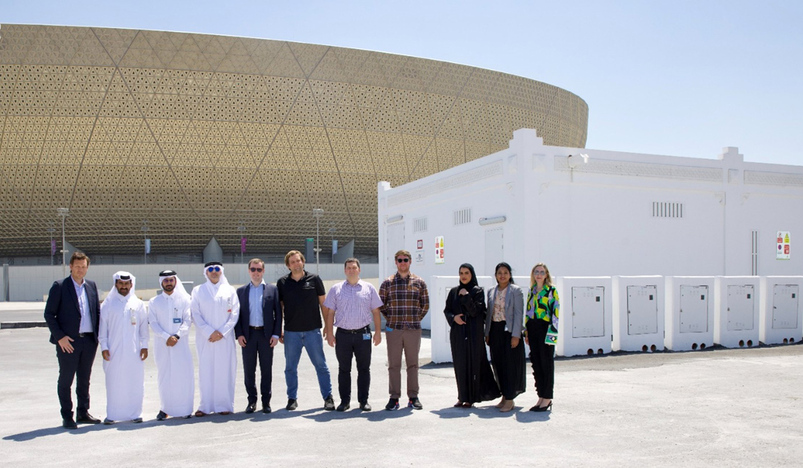
Qatar 2022
Powering temporary tournament infrastructure directly from the national grid saved 5 million litres of diesel
Powering temporary facilities at FIFA World Cup stadiums and precincts directly from Qatar’s national grid instead of using diesel generators cut carbon emissions during the tournament by approximately 9,000 tonnes.
The innovative solution was delivered at seven of the eight Qatar 2022 stadiums by the Supreme Committee for Delivery & Legacy (SC), FIFA and Qatar General Electricity & Water Corporation (KAHRAMAA). Tournament organisers estimate the project saved more than 5 million litres of diesel.
SC Director General, Eng. Yasir Al Jamal, said: “By working with national stakeholders, we were able to deliver an innovative solution that honoured our sustainability commitments. By drastically reducing the need for on-site diesel generators, we improved local air quality, reduced noise, minimised carbon emissions and eliminated the need to transport and store large amounts of fuel. We were able to achieve all of these benefits while providing a highly reliable source of power throughout the tournament.”
Prior to the FIFA World Cup, the SC, FIFA and Kahramaa reviewed test events such as the FIFA Club World Cup and FIFA Arab Cup and concluded that grid solutions were the most feasible option to reduce the reliance on diesel powered generators. This led to the development of 44 substations at tournament venues to provide 49,000 kVA of installed electrical capacity. Initially, 185 generators were deemed necessary to power stadiums and nearby facilities – but that number was cut to 70 thanks to the national grid project. Organisers found that 82% of the tournament’s power needs were delivered directly from the national grid.
Kahramaa President HE Eng. Essa bin Hilal Al Kuwari said, “We initiated our collaboration with the SC during the early stages of infrastructure planning. After conducting a comprehensive assessment of the power requirements, we identified the optimal infrastructure upgrades necessary to increase power capacities and extend cabling to the required areas. Our recommended approach delivered notable environmental advantages while also being cost effective. Moreover, it establishes a long-lasting legacy by ensuring the stadiums can be powered directly from Qatar's reliable grid, eliminating the need for temporary generators for future events.”
The project formed part of the SC’s commitment to boosting environmental issues.
Eng. Bodour Al Meer, Sustainability Executive Director, SC, said: “Qatar has prioritised sustainability from the moment we won the rights to host the FIFA World Cup. Our Sustainability Strategy identified temporary power solutions with low environmental impact as a priority area. The successful completion of this project is testament to the tremendous work that we did to leave a sustainable legacy for future generations.”
.jpg)
Qatar Secures Place Among the World's Top 10 Wealthiest Nations
.jpg)
Hamad International Airport Witnesses Record Increase in Passenger Traffic

Saudi Arabia: Any visa holder can now perform Umrah

What are Qatar's Labour Laws on Annual Leave?
Leave a comment